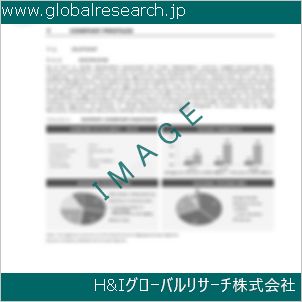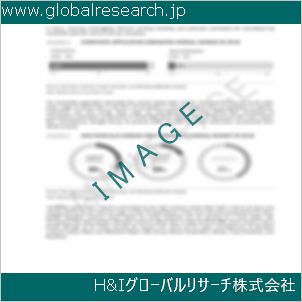Table of Contents
1 Industry Overview of Aluminumnitrate
1.1 Definition and Specifications of Aluminumnitrate
1.1.1 Definition of Aluminumnitrate
1.1.2 Specifications of Aluminumnitrate
1.2 Classification of Aluminumnitrate
1.3 Applications of Aluminumnitrate
1.3.1 Nuclear Application
1.3.2 Non-Nuclear Application
1.4 Industry Chain Structure of Aluminumnitrate
1.5 Industry Overview and Major Regions Status of Aluminumnitrate
1.5.1 Industry Overview of Aluminumnitrate
1.5.2 Global Major Regions Status of Aluminumnitrate
1.6 Industry Policy Analysis of Aluminumnitrate
1.7 Industry News Analysis of Aluminumnitrate
2 Manufacturing Cost Structure Analysis of Aluminumnitrate
2.1 Raw Material Suppliers and Price Analysis of Aluminumnitrate
2.2 Equipment Suppliers and Price Analysis of Aluminumnitrate
2.3 Labor Cost Analysis of Aluminumnitrate
2.4 Other Costs Analysis of Aluminumnitrate
2.5 Manufacturing Cost Structure Analysis of Aluminumnitrate
2.6 Manufacturing Process Analysis of Aluminumnitrate
3 Technical Data and Manufacturing Plants Analysis of Aluminumnitrate
3.1 Capacity and Commercial Production Date of Global Aluminumnitrate Major Manufacturers in 2023
3.2 Manufacturing Plants Distribution of Global Aluminumnitrate Major Manufacturers in 2023
3.3 R&D Status and Technology Source of Global Aluminumnitrate Major Manufacturers in 2023
3.4 Raw Materials Sources Analysis of Global Aluminumnitrate Major Manufacturers in 2023
4 Capacity, Production and Revenue Analysis of Aluminumnitrate by Regions, Types and Manufacturers
4.1 Global Capacity, Production and Revenue of Aluminumnitrate by Regions 2019-2024
4.2 Global and Major Regions Capacity, Production, Revenue and Growth Rate of Aluminumnitrate 2019-2024
4.3 Global Capacity, Production and Revenue of Aluminumnitrate by Types 2019-2024
4.4 Global Capacity, Production and Revenue of Aluminumnitrate by Manufacturers 2019-2024
5 Price, Cost, Gross and Gross Margin Analysis of Aluminumnitrate by Regions, Types and Manufacturers
5.1 Price, Cost, Gross and Gross Margin Analysis of Aluminumnitrate by Regions 2019-2024
5.2 Price, Cost, Gross and Gross Margin Analysis of Aluminumnitrate by Types 2019-2024
5.3 Price, Cost, Gross and Gross Margin Analysis of Aluminumnitrate by Manufacturers 2019-2024
6 Consumption Volume, Consumption Value and Sale Price Analysis of Aluminumnitrate by Regions, Types and Applications
6.1 Global Consumption Volume and Consumption Value of Aluminumnitrate by Regions 2019-2024
6.2 Global and Major Regions Consumption Volume, Consumption Value and Growth Rate of Aluminumnitrate 2019-2024
6.3 Global Consumption Volume and Consumption Value of Aluminumnitrate by Types 2019-2024
6.4 Global Consumption Volume and Consumption Value of Aluminumnitrate by Applications 2019-2024
6.5 Sale Price of Aluminumnitrate by Regions 2019-2024
6.6 Sale Price of Aluminumnitrate by Types 2019-2024
6.7 Sale Price of Aluminumnitrate by Applications 2019-2024
6.8 Market Share Analysis of Aluminumnitrate by Different Sale Price Levels
7 Supply, Import, Export and Consumption Analysis of Aluminumnitrate
7.1 Supply, Consumption and Gap of Aluminumnitrate 2019-2024
7.2 Global Capacity, Production, Price, Cost, Revenue, Supply, Import, Export and Consumption of Aluminumnitrate 2019-2024
7.3 USA Capacity, Production, Price, Cost, Revenue, Supply, Import, Export and Consumption of Aluminumnitrate 2019-2024
7.4 EU Capacity, Production, Price, Cost, Revenue, Supply, Import, Export and Consumption of Aluminumnitrate 2019-2024
7.5 China Capacity, Production, Price, Cost, Revenue, Supply, Import, Export and Consumption of Aluminumnitrate 2019-2024
7.6 Japan Capacity, Production, Price, Cost, Revenue, Supply, Import, Export and Consumption of Aluminumnitrate 2019-2024
8 Major Manufacturers Analysis of Aluminumnitrate
8.1 Manufacturer One
8.1.1 Company Profile
8.1.2 Product Picture and Specifications
8.1.2.1 Type I
8.1.2.2 Type II
8.1.2.3 Type III
8.1.3 Capacity, Production, Price, Cost, Gross and Revenue
8.1.4 Contact Information
8.2 Manufacturer Two
8.2.1 Company Profile
8.2.2 Product Picture and Specifications
8.2.2.1 Type I
8.2.2.2 Type II
8.2.2.3 Type III
8.2.3 Capacity, Production, Price, Cost, Gross and Revenue
8.2.4 Contact Information
8.3 Manufacturer Three
8.3.1 Company Profile
8.3.2 Product Picture and Specifications
8.3.2.1 Type I
8.3.2.2 Type II
8.3.2.3 Type III
8.3.3 Capacity, Production, Price, Cost, Gross and Revenue
8.3.4 Contact Information
8.4 Manufacturer Four
8.4.1 Company Profile
8.4.2 Product Picture and Specifications
8.4.2.1 Type I
8.4.2.2 Type II
8.4.2.3 Type III
8.4.3 Capacity, Production, Price, Cost, Gross and Revenue
8.4.4 Contact Information
8.5 Manufacturer Five
8.5.1 Company Profile
8.5.2 Product Picture and Specifications
8.5.2.1 Type I
8.5.2.2 Type II
8.5.2.3 Type III
8.5.3 Capacity, Production, Price, Cost, Gross and Revenue
8.5.4 Contact Information
…
9 Marketing Trader or Distributor Analysis of Aluminumnitrate
9.1 Marketing Channels Status of Aluminumnitrate
9.2 Traders or Distributors with Contact Information of Aluminumnitrate by Regions
9.3 Ex-work Price, Channel Price and End Buyer Price Analysis of Aluminumnitrate
9.4 Regional Import, Export and Trade Analysis of Aluminumnitrate
10 Industry Chain Analysis of Aluminumnitrate
10.1 Upstream Major Raw Materials Suppliers Analysis of Aluminumnitrate
10.1.1 Major Raw Materials Suppliers with Contact Information Analysis of Aluminumnitrate
10.1.2 Major Raw Materials Suppliers with Supply Volume Analysis of Aluminumnitrate by Regions
10.2 Upstream Major Equipment Suppliers Analysis of Aluminumnitrate
10.2.1 Major Equipment Suppliers with Contact Information Analysis of Aluminumnitrate
10.2.2 Major Equipment Suppliers with Product Pictures Analysis of Aluminumnitrate by Regions
10.3 Downstream Major Consumers Analysis of Aluminumnitrate
10.3.1 Major Consumers with Contact Information Analysis of Aluminumnitrate
10.3.2 Major Consumers with Consumption Volume Analysis of Aluminumnitrate by Regions
10.4 Supply Chain Relationship Analysis of Aluminumnitrate
11 Development Trend of Analysis of Aluminumnitrate
11.1 Capacity, Production and Revenue Forecast of Aluminumnitrate by Regions and Types
11.1.1 Global Capacity, Production and Revenue of Aluminumnitrate by Regions 2024-2029
11.1.2 Global and Major Regions Capacity, Production, Revenue and Growth Rate of Aluminumnitrate 2024-2029
11.1.3 Global Capacity, Production and Revenue of Aluminumnitrate by Types 2024-2029
11.2 Consumption Volume and Consumption Value Forecast of Aluminumnitrate by Regions, Types and Applications
11.2.1 Global Consumption Volume and Consumption Value of Aluminumnitrate by Regions 2024-2029
11.2.2 Global and Major Regions Consumption Volume, Consumption Value and Growth Rate of Aluminumnitrate 2024-2029
11.2.3 Global Consumption Volume and Consumption Value of Aluminumnitrate by Types 2024-2029
11.2.4 Global Consumption Volume and Consumption Value of Aluminumnitrate by Applications 2024-2029
11.3 Supply, Import, Export and Consumption Forecast of Aluminumnitrate
11.3.1 Supply, Consumption and Gap of Aluminumnitrate 2024-2029
11.3.2 Global Capacity, Production, Price, Cost, Revenue, Supply, Import, Export and Consumption of Aluminumnitrate 2024-2029
11.3.3 USA Capacity, Production, Price, Cost, Revenue, Supply, Import, Export and Consumption of Aluminumnitrate 2024-2029
11.3.4 EU Capacity, Production, Price, Cost, Revenue, Supply, Import, Export and Consumption of Aluminumnitrate 2024-2029
11.3.5 China Capacity, Production, Price, Cost, Revenue, Supply, Import, Export and Consumption of Aluminumnitrate 2024-2029
11.3.6 Japan Capacity, Production, Price, Cost, Revenue, Supply, Import, Export and Consumption of Aluminumnitrate 2024-2029
12 New Project Investment Feasibility Analysis of Aluminumnitrate
12.1 New Project SWOT Analysis of Aluminumnitrate
12.2 New Project Investment Feasibility Analysis of Aluminumnitrate
13 Conclusion of the Global Aluminumnitrate (CAS 13473-90-0) Industry 2024 Market Research Report
| ※参考情報 硝酸アルミニウムは、化学式Al(NO₃)₃で表される化合物で、アルミニウムの硝酸塩です。CAS番号は13473-90-0で、通常は無水物として取り扱われていますが、いくつかの水和物も存在します。この物質は、様々な化学的性質や工業用途を持ち、重要な役割を果たしています。 硝酸アルミニウムは、白色結晶または粉末状の固体で、吸湿性があり、湿気を吸収しやすい性質があります。水に溶解しやすいことも特徴の一つであり、加熱すると decomposes(分解)し、酸化アルミニウムや亜硝酸を生成します。硝酸アルミニウムは、強い酸性を持ち、金属類との反応においても腐食性があります。これらの特性から、取り扱いには注意が必要です。 この化合物は様々な種類の水和物を形成します。例えば、六水和物(Al(NO₃)₃・6H₂O)は最も一般的に知られており、工業プロセスや実験室での使用が広く行われています。その他にも、三水和物や九水和物などの形態が存在し、それぞれの特性に応じた用途があります。 硝酸アルミニウムの主な用途としては、主に化学工業、農業、製紙、繊維、電子工業などが挙げられます。特に、農業においては、土壌の酸性を調整するための肥料として使用されることが多いです。土壌改善や植物の栄養供給に寄与し、作物の生産性を向上させる役割があります。 また、製紙業界では、紙の強度を増すための添加物として利用されます。繊維産業では、染料の定着を助ける役割を果たすため、この分野でも重要です。電子工業においては、半導体の製造過程などで使用されることがあります。 硝酸アルミニウムの関連技術については、化学合成技術や環境工学、農業技術の進展と密接に関連しています。例えば、硝酸アルミニウムを用いた土壌改良技術は、持続可能な農業の実現に寄与しており、これにより、農業の生産効率を高めることが可能です。また、硝酸アルミニウムの特性を利用した新たな化学合成プロセスの研究も進められており、環境に優しい方法での合成を模索する動きもあります。 加えて、硝酸アルミニウムは廃棄物処理や水処理技術にも利用されることがあり、有害物質の除去や水質改善のための触媒的役割を果たすこともあります。これらの技術は、持続可能な社会を実現するための重要な要素として注目されています。 その一方で、硝酸アルミニウムの安全性には注意が必要です。化学物質の取り扱いにおいて、適切な安全対策を講じることが重要です。直接的な接触や吸入は避けるべきであり、適切な防護具を着用することが推奨されます。また、硝酸アルミニウムは環境中での分解や蓄積に影響を及ぼす可能性があるため、その使用には法令遵守と責任ある行動が求められます。 硝酸アルミニウムは、非常に多面的な化合物であり、その特性や用途は広範囲にわたります。農業や工業、環境保護の分野における重要な役割を理解し、適切に活用することが、今後の持続可能な社会の構築に必要不可欠であると言えるでしょう。このように、硝酸アルミニウムに関する知識を深めることは、私たちの生活や産業において非常に重要な意味を持つのです。 |
❖ 免責事項 ❖
http://www.globalresearch.jp/disclaimer












